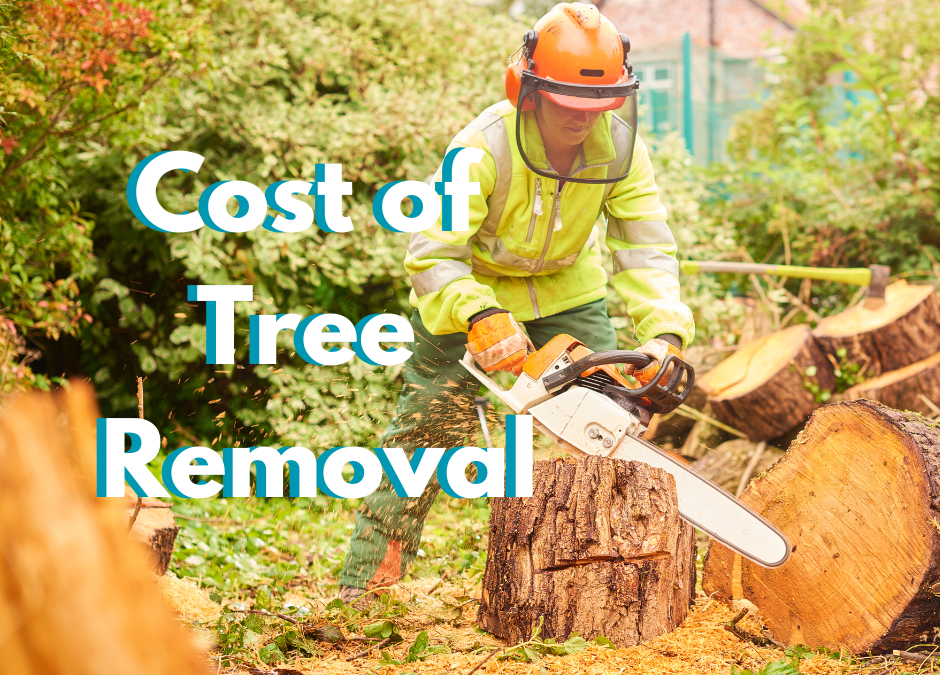The Financial Implications of Cutting Down a Damaged Tree
Every homeowner should be aware of the financial cost that may come with cutting down a damaged, diseased or partially fallen tree. Not only is the task of cutting down a tree physically dangerous, but due to costs incurred such as potentially damaging fencing, tree removal charges, and debris disposal costs, the financial implications can be great. This blog post will explore the different costs associated with cutting down a fallen tree, as well as how to avoid additional costs and potential legal issues. Additionally, we’ll cover options for insurance coverage.
Who Covers Tree Removal Expenses?
When it comes to tree removal, who covers the cost of the service? This can be a tricky question to answer as there are several factors to consider. Depending on how and why the tree is being removed, different parties may be responsible for covering the expenses associated with removing the tree. We will provide you with comprehensive information on who covers tree removal expenses so that you can make an informed decision when deciding who is responsible to pay for your own specific situation.
In most cases, property owners are responsible for cutting down their trees if they need to be removed due to any potential hazards or damage caused by them. If a fallen tree needs to be cut down and cleared away from a property, homeowners often have no other choice but to cover this expense themselves. In these cases, it’s important for homeowners to consult with professional arborists in order determine exactly what kind of services are required for safe and effective removal of large fallen trees before attempting any work by themselves.
It’s also worth mentioning here that insurance companies usually don’t cover costs related to voluntary tree removals even though some policies might offer support towards hazardous situations caused by fallen trees. Therefore, understanding insurance coverage options should always come first before assessing money-related matters.
Tree removal experts charge anywhere between two hundred fifty dollars and over five thousand dollars per project depending primarily on their experience level, location, safety requirements, type of equipment necessary, etc… As already mentioned above, there’s not one definitive price tag placed upon such services; rather multiple variables play into what ends up tallying one’s final bill, which typically includes base charges plus any extra fees charged per hour worked. In addition, a fallen trees’ clean up price, and how much it costs to remove a tree depend on the size of the tree as well as location. Special care should always be taken when hiring contractors offering discounted rates since doing so could result in costly errors which could lead not only further costs, but additionally endanger personal safety.
How to Avoid Additional Costs & Legal Issues When Removing a Fallen Tree
Who Covers Tree Removal? Removing a fallen tree can be an expensive and complex job, but luckily you have several options available to cover the costs of the removal Ideally, if your tree fell on someone else’s property, their homeowner’s insurance would cover the cost of removing it. However, if they don’t have insurance or are not covered for this type of incident then it may fall upon yourself as the landlord/owner to pay for its removal.
Cutting Down a Damaged or Dead Tree Cost
The cost of cutting down and removing a damaged or dead tree varies depending on its size and location, as well as whether additional debris clean up services like stump grinding or chipping are needed after the job is completed. Generally speaking prices range from anywhere between $250-$5000 dollars depending on how much debris needs to be removed or if any additional locations so always take these factors into consideration prior to getting quotes.
Fallen Trees Clean Up Price
Aside from actually cutting down the tree itself there will also be associated clean up fees once all trees parts are removed which come with additional costs depending on how large the area affected is by debris and what additional services may be needed such as stump grinding etc. Always remember that extra safety precautions will need to be taken when dealing with large broken branches which may require special rigging equipment causing further increases in overall cost. The average minimum cost of yard debris removal is $175.
Tree Removal depends entirely upon various factors including;
Size & Shape – The larger/taller a tree is will usually equate to higher prices associated with having them cut down & removed safely
Accessibility – Whether they are situated near buildings/houses requiring specialist rigging equipment or man power additions
Location– Where exactly they are located whether close proximity requires extra care around wires /structures and surrounding areas will affect final bill amounts, so make sure to get a detailed quote.
Additional Costs & Legal Issues Of Removing A Fallen Tree
There could potentially be more charges than just those mentioned above should certain regulations apply in different cities across many states that can potentially require full permits before even commencing work within certain areas. In addition, there could be other implications related to personal liability issues should accidents occur, so always check restrictions and permit laws in Oregon or Washington.
Cutting down a fallen tree can come with a large financial cost, depending on the size and location of the tree. It also depends on who owns the tree—such as whether it is in your own yard or on someone else’s property—you may be liable for paying some or all of the costs associated with removing and disposing of it. Be sure to investigate all your options before making any decisions about cutting down and removing a fallen tree to ensure that you are financially prepared should something go wrong during the process. If you have any questions or are interested in a free quote, call or contact us today.

